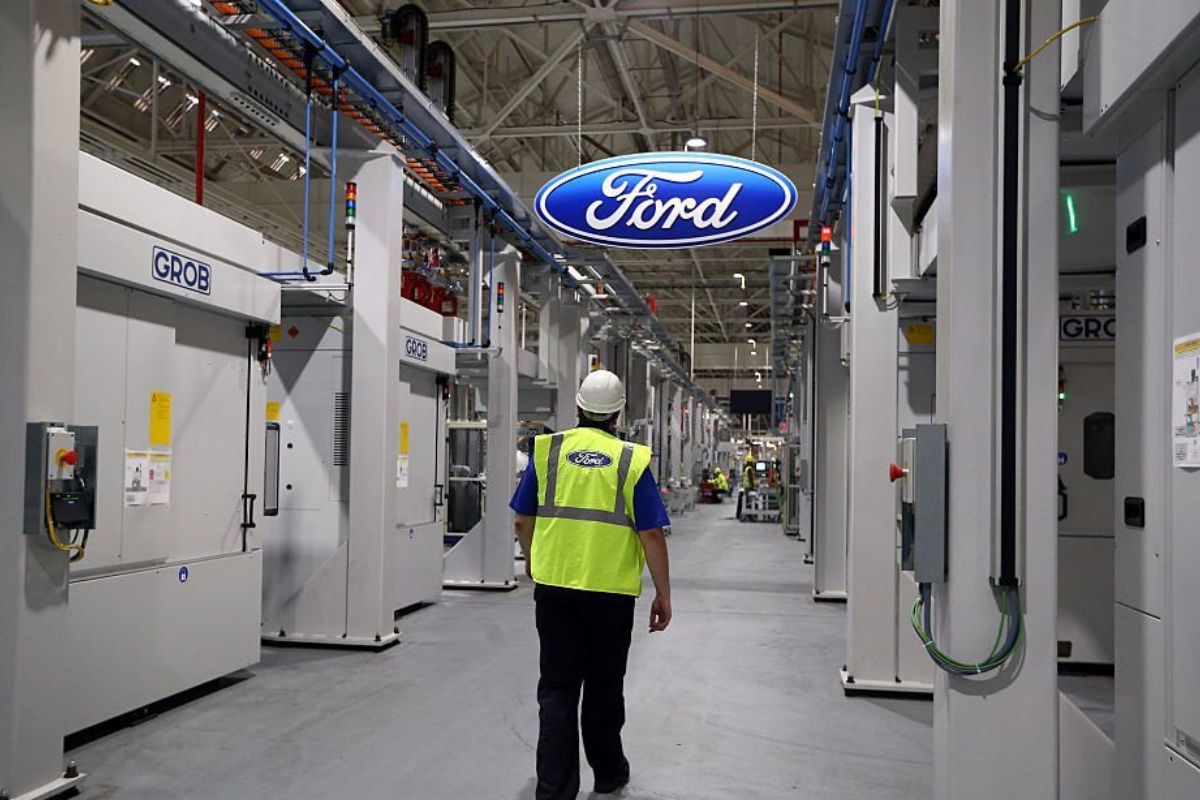Currently, the automobile sector is going through a difficult time characterized by supply chain problems, manufacturing bottlenecks, and labor disputes. The fact that Ford recently decided to fire almost 700 employees who were in charge of producing the F-150 Lightning, an electric variant of their renowned pickup vehicle, is among the most important changes in this respect. Because it has nothing to do with the ongoing United Auto Workers (UAW) union strike, which has impacted multiple significant automakers, this layoff is distinct. We will examine the rationale for Ford layoffs, the broader effects of the UAW strike, and the F-150 Lightning’s future prospects in this blog.
Ford Layoffs and the F-150 Lightning
Many people are surprised by Ford layoffs decision to temporarily eliminate one of the three shifts at its Rouge Electric Vehicle Center in Dearborn, Michigan, where the F-150 Lightning is manufactured. This move is unrelated to the UAW strike, in contrast to other recent Ford layoffs. A number of limitations are listed in Ford’s official statement, such as problems with the supply chain and the requirement to process and deliver cars that had undergone quality inspections following the plant’s temporary closure earlier in the year. This development calls into question the supply chain, the competitiveness of the F-150 Lightning, and the current status of electric vehicle (EV) production.
A Decrease in Lightning Sales
The reduction in F-150 Lightning sales, which dropped by 45% in the third quarter of last year compared to the prior year, is one of the main causes of Ford layoffs. Ford, nevertheless, is still upbeat about the future and anticipates higher sales in the last three months of the year as facility improvements take hold. The third quarter saw a robust 65% increase in demand for Ford’s array of electric vehicles. This contradictory image brings up crucial questions regarding consumer preferences, the status of the electric car market today, and the difficulties automakers will encounter in making the switch to EVs.
The Impact of the UAW Strike
Even if the UAW strike is not directly related to the F-150 Lightning Ford layoffs, it is nevertheless important to comprehend the larger implications of this labor issue. Five assembly plants from Ford, General Motors, and Stellantis (previously Fiat Chrysler) are the targets of the UAW strike. Consequently, all three businesses were forced to fire employees. Due to the UAW strike’s spread at its largest unit, the Kentucky Truck unit, Ford in particular announced 500 more layoffs across five component plants. Due to the strike’s extension, it is predicted that by the end of the week, there may be up to 4,600 layoffs. The difficulties the automobile sector is facing are exacerbated by these layoffs.
Challenges for the Workers
The effect on the impacted workers is a crucial component of the UAW strike and the ensuing Ford layoffs. In most areas, workers laid off as a result of the strike are not entitled for unemployment compensation. They also do not receive “sub pay,” which is what the companies usually provide them when there is a labor conflict. When a worker is laid off, the combination of sub pay and unemployment compensation typically covers 74% of their regular income. Nonetheless, the laid-off F-150 Lightning employees will be qualified for sub-pay and unemployment benefits, which will help them out financially during this difficult period.
The Union’s Perspective
The companies’ arguments that they had to fire employees whose jobs were impacted by the walkout at other factories have been contested by the UAW. The union contends that the roughly 35,000 employees who are presently on strike at the three companies should receive the same $500 in weekly strike benefits as the laid-off workers. This emphasizes how difficult labor disputes are in the car sector and how labor unions and management continue to fight each other.
Challenges of Electric Vehicle Production
As more environmentally friendly and sustainable transportation solutions are demanded by both governments and customers, electric vehicles have emerged as a key focus for the global automobile industry. Like many other automakers, Ford realized it would have to switch to electric cars in order to comply with more stringent pollution regulations and satisfy a rising consumer base of environmentally concerned buyers.
The idea of an electric F-150 was appealing, but switching to electric car manufacturing is not without its difficulties. Different parts, manufacturing techniques, and supply chain configurations are needed to build electric vehicles compared to those powered by conventional internal combustion engines (ICEs). In addition, the automotive sector is dealing with a shortage of semiconductors and problems in the global supply chain, which have significantly affected output in all areas. These industry-wide problems are typified by the production limitations on the F-150 Lightning brought on by problems with the supply chain.
Consumer Adoption and Market Dynamics
The third quarter’s decrease in F-150 Lightning sales serves as further evidence of how complicated the market for electric vehicles is. Even though there is a rising market for electric cars, a variety of factors affect consumers’ preferences and decisions to buy. Customer adoption rates can be impacted by variables like the availability of charging infrastructure, the cost of the vehicle, and how people view electric vehicle technology.
The F-150 Lightning’s availability and cost are crucial considerations. Government subsidies frequently help to lower the cost of electric vehicles, which are generally more expensive. Furthermore, customers could be reluctant to embrace new technology, especially in a market niche where toughness and dependability are crucial, like pickup trucks.
Therefore, Ford’s ability to resolve these issues and guarantee the F-150 Lightning’s pricing, availability, and broad consumer adoption will determine how well it does in the market. Ford’s confidence in rising sales as a result of the factory renovation shows how dedicated the business is to the Lightning’s commercial success.
Labor Disputes and Industry Stability
The UAW strike’s effects, which have led to Ford layoffs at several large automakers, underscore the ongoing hostility between labor unions and management in the sector. Labor disputes can have a negative financial impact on businesses and employees alike, as well as impede productivity and lower worker morale. In an environment where the industry is managing the switch to electric vehicles and overcoming numerous obstacles, such as supply chain interruptions and technological innovation, this volatility is especially worrisome.
In addition to having a direct effect on the affected workers, Ford’s decision to lay off employees at the F-150 Lightning facility is noteworthy because it illustrates the general unpredictability and volatility in the automobile industry. Finding a middle ground and cooperating is essential if automakers and unions are to maintain the stability and success of the industry, particularly in times of major change.
Conclusion
To sum up, the automobile industry is experiencing several challenges, as evidenced by the recent Ford layoffs at Ford’s Rouge Electric Vehicle Center and the broader effects of the UAW strike. Ford’s immediate worries include the fall in sales of the F-150 Lightning and production limitations, but the industry-wide labor-management difficulties are further highlighted by the other companies that are affected by strikes. Automakers, unions, and legislators must work together to identify solutions that will secure the long-term security and expansion of the automotive industry as it continues to shift to electric vehicles and faces difficulties in its supply chain. The future of the F-150 Lightning and the industry as a whole are yet unknown, but it is obvious that these difficulties will influence the auto industry for years to come.









